This project aims at processing crystal phase quantum dots in nanowires to propose new device designs for quantum photonic applications. This will be done using our state of the art clean room facility.

Quantum Gates Experiments and/or Modelling
The aim of this project is to create quantum gates. Quantum gates are one of the key building blocks of forthcoming quantum computers. For instance, they can be used to entangle qubits.
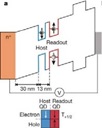
Fast Single Photons
Can single photons travel faster than c, the speed of light?Fast" light, or light that goes faster than it should, is a well known phenomenon for laser light and it does not contradict special relativity. But what about single photons? There are still debates on if single photons can travel faster than light, and if possible, on whether or not we can actually measure them. We have clear experimental evidence that show faster-than-light single photons and we want to understand the physics behind these results and create a model that can replicate them.

Quantum information technology with quantum dots in nanowire
Nanowire quantum dots are one of the new big player in quantum technologies and many game-changer devices, like quantum gates or quantum memories, still need to be designed! We have the tools to design, to fabricate and to test novel structures in order to make such devices, but first we need to simulate them using our post-Hartree-Fock based model to understand which semiconductor structure could be the next-step device in quantum information.
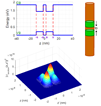
Quantum Cryptography: 100% secure communication
Can we use quantum mechanics to achieve communication 100% secure against eavesdropping? In this project, we will develop an experimental setup to send encrypted messages using EPR Quantum Key Distribution. Multiple existing protocols will be studied and one of them will be chosen for implementation in our lab, starting from scratch.
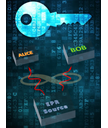
qLab towards the Quantum Internet
Modern communication networks, such as the Internet, are not 100% secure against eavesdropping nor energy efficient. Our vision is to develop a solid ground from which to design a novel network based on quantum technologies. This Quantum Network will allow secure and energy-efficient communication and will make possible for quantum computers to communicate in their own quantum language. We believe this can be done using semiconductor structures like quantum dots in nanowires.
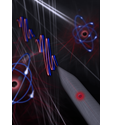
Bound states in continuum (BICs) in photonic crystal membranes
Recently, we have found that the bound state in continuum (BIC) phenomenon occurs in one-dimensional (1D) photonic crystal membrane, referred to as high-contrast grating (HCG). Right now, a BIC-laser is being fabricated based on this structure in our group. In this theoretical project, we aim at understanding more clearly the BIC mechanism as well as properties of the BIC in HCGs.

Photon Blockade effect in a cavity-quantum dot system
The overall aim of the project is to establish a theoretical understanding of the physical mechanisms governing the photon blockade phenomenon and to simulate photon transport through the photon blockade system. The project consists of both theoretical and numerical work and seeks a student having background knowledge in quantum mechanics and also basic skills in Matlab programming.

Theory of Fano lasers
In this project a mathematical model for the Fano laser will be formulated and used to investigate, numerically and analytically, the fundamental laser properties. An important goal of the project is to investigate the aspects of the laser design that are critical for experimental implementations.

Preventing a system from going classical: The quantum Zeno effect
The quantum Zeno effect is weird: If a system is observed it does not change! Quantum mechanically, an observation collapses the wavefunction onto a specific state, and if the observations are made frequently enough, the system will not evolve away from that initial state. The effect has been experimentally observed in cold atoms, but here we aim to understand what the conditions are for observing it in a quantum dot.

Experimental characterization of slow light enhanced photonic crystal optical amplifiers
The semiconductor optical amplifier is a key component for any optical network, however, for use in an integrated platform, downscaling the required size footprint is of major importance. The aim of this project is to experimentally investigate the fundamental as well as practical limits for achieving enhanced amplification using photonic crystal waveguide based optical amplifiers that exploit slow light effects.

Experimental time resolved dynamics of photonic crystal switches
An optically controlled photonic switch is a key component for achieving high speed all optical signal processing. However, data processing at nodes is still carried out using integrated electronic circuits with limited possibilities for further increasing the speed owing to heating issues. Photonic crystal nanocavities provide an excellent platform for achieving the necessary optical non-linearity required for all-optical switching. In this project you will experimentally explore the fast dynamics of InP photonic crystal switches using pump-probe spectroscopy.

Hybrid photonic crystal laser for silicon photonics
The aim of this theoretical project is to investigate wave-guiding properties of a newly proposed hybrid photonic crystal lasers integrated onto a silicon-on-insulator (SOI) wafer.

Acoustic grating reflector: analogy between acoustic and photonic wave equations
The aim of this theoretical project is to investigate the reflection properties of the acoustic sub-wavelength grating by using analogy between photonic and acoustic wave equations.

Multi-photon processes in solid-state quantum emitters
Though quasi-resonant excitation schemes are common, they are still not fully understood, and have only recently begun to be investigated experimentally. DTU Fotonik has strong collaborations with experimental and theoretical groups fabricating single photon sources. The aim of this theoretical project is to better understand the quasi-resonant excitation procedure and its relation to multi-photon processes.

Ultrafast micro reflector
In this project, you will investigate a grating mirror of which reflectivity can be electro-optically modulated. As schematically illustrated in the figure above, reversely applied voltage through the quantum wells in the grating mirror results in refractive index change, leading to reflectivity of the grating mirror e.g., from 99.9 % to 99.0 % [3].
Phonon effects in a nanowire single-photon source
Semiconductor nanowires containing quantum dots are interesting candidates for single-photon sources, which constitute a major building block in the realization of quantum computers. In this project we employ advanced quantum mechanical models and develop numerical tools to examine, how the functionality of the single-photon source may be improved by minimizing the disturbances from the environment.

Modeling of nano/micro lasers
A full laser simulator including all photonic, electronic, and thermal aspects is a key tool to investigate and design a new laser structures. In this project, an integrated simulator for nano/micro laser will be developed. This will be a very exciting intellectual work which involves your knowledge on various physics subjects like electromagnetism, quantum mechanics, and thermodynamics.

Nanowire single-photon sources
In quantum information technology there is a need for high-efficiency sources of indistinguishable single photons. The photonic nanowire is a promising candidate for a such a source. In this project we will design and optimize the nanowire single-photon source using optical modeling tools built from scratch by the student.
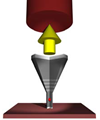
Optical properties of photonic crystal microcavities and waveguides
Photonic crystal cavities and waveguides represent an attractive platform for integrated information processing in a solid-state platform, both classically for high-speed applications and for quantum information processing. In this project we will construct optical simulation tools from scratch and employ these to study and design new functionalities in the photonic crystal membrane.
